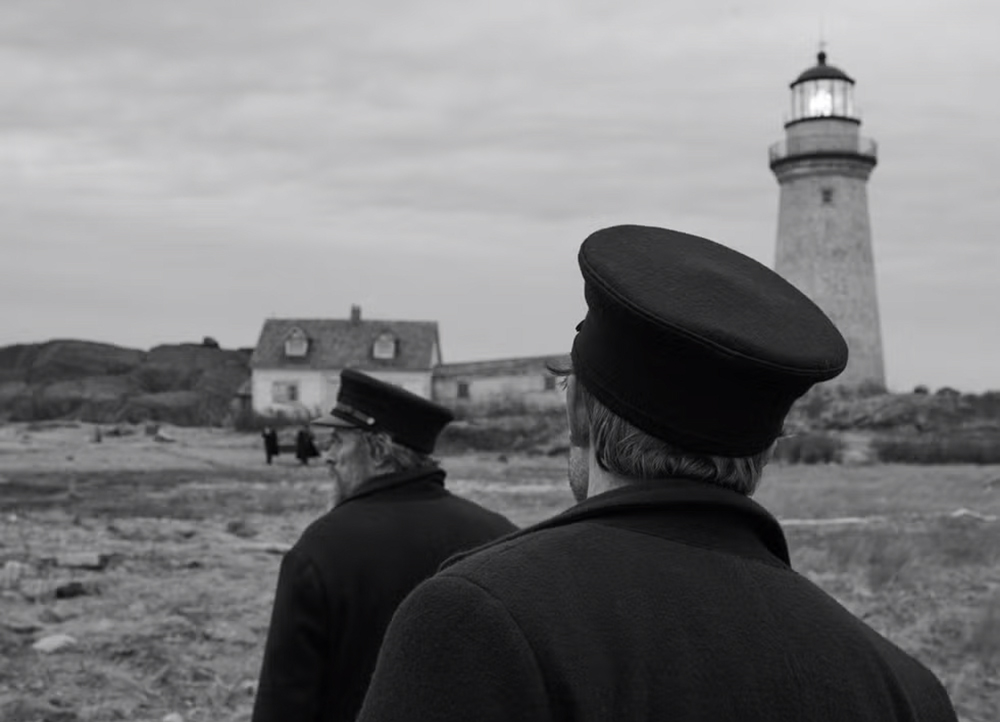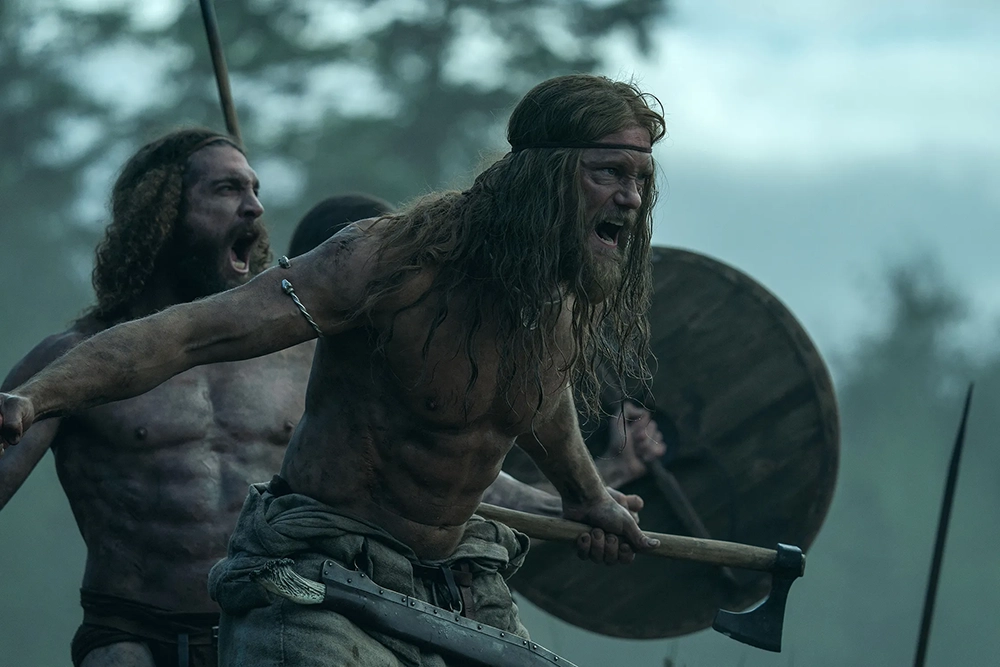Though Robert Eggers boasts dozens of film awards and nominations, many critics and moviegoers remain unsure about his small but surreal canon of films.
Whether blurring the lines of comedy and despair or conjuring mystique through pungent atmospheres, watching an Eggers film is far from intuitive. He leaves the viewer, alongside his characters, the distinct choice between rebellion or surrender.
In choosing the former, Eggers’s films become transportive. A gateway to distant centuries where the bounds of the material and supernatural are severed, leaving his tormented characters dancing to the tune of some terrible orchestra. But where did Eggers come from and how do his films achieve their terrible uncanny?
Robert Eggers: A Brief Introduction
With Vice Talks Film, Robert Eggers recalls his “lifelong obsession” with folklore, beginning deep in his New England childhood. After watching Murnau’s “Nosferatu” (1922), this fascination devolved into an apparent obsession. In high school, he brought the classic to the stage, which would effectively launch young Eggers into his career.
Soon, New York beckoned, and a young Eggers quickly graduated from small Shakespearean acting gigs to larger sets as a production designer. By the time “The Witch” was written, he had acquired the skill set to materialize his vision through the lens of cinema.
Theater arts provided the backbone for his soon-to-develop auteur. Stepping into his debut, he sought to leave his literary mark with rhythmic soliloquies, thorough set designs, and fluent choreography to every scene—all providing a hidden sense of the theatrical style that Eggers had grown to love. With all of this in play, the cameras rolled for his first full-length movie, and Eggers was flush with confidence.
‘The Witch’ (2015)

“The Witch,” Eggers’s debut, follows an excommunicated 17th-century Puritan family seeking spiritual refuge in the wilderness of New England. When the youngest child Samuel vanishes, his sister, Thomison (Anya Taylor-Joy), is accused of witchcraft, triggering a twisted familial quarrel. All the while, a dark spiritual force lurks behind the shadow of the forest.
The Puritans are bound to this labyrinth, confronting their religious and psychological validity at every turn. Their story is of faith and piety, as though Eggers sought to prosecute Western morality in the most strenuous of circumstances.
“If I could upload a Puritan’s nightmare directly into the audience,” Eggers said with Vice Talks Film, “that would be the goal.” “The Witch” proved his testing ground for his absurd vision.
To many (including the Sundance Awards), “The Witch” was an outright success. From the immersive set design to the bleak yet enthralling cinematography of Jarin Blaschke, Eggers created a portal. A spiritual quest in the likes of “Young Goodman Brown,” where audiences devoured philosophical dilemmas, theological discovery, and historical immersion in a delicious cinematic spoonful.
For many, “The Witch” proved unlike your standard horror film, certainly unlike anything from the 21st-century. With a runtime of just ninety minutes, it’s a digestible watch, minimalist in the elements of filmmaking. But behind this veil of simplicity rests a subtle complexity. “The Witch” is a story layered with challenge and intrigue, made plausible through unveiling dialogue. Although his debut was only a glimpse into his developing style, “The Witch” provided a suitable launching point for Eggers to refine his vision with fervor.
‘The Lighthouse’ (2019)
 “The Lighthouse” tells the story of two stranded wickies and their descent into madness. Winslow (Robert Patterson), seeking refuge from his past, finds only terror in his new employment, and his sanity is ravaged by the psychological abuse of his superior (Willem Dafoe) and the strange enchantment of the lighthouse.
“The Lighthouse” tells the story of two stranded wickies and their descent into madness. Winslow (Robert Patterson), seeking refuge from his past, finds only terror in his new employment, and his sanity is ravaged by the psychological abuse of his superior (Willem Dafoe) and the strange enchantment of the lighthouse.
With Rotten Tomatoes, responding to a question stating, “What the f*** is happening,” Eggers responded: “That’s a fair question… people who enjoy the film should be leaving asking that very same thing.” In many ways, “The Lighthouse” proves vague compared to “The Witch.” Unlike the Puritans, Winslow possesses a shambled morality, and by pairing this with the added layers of veiled horror, the cause of his downfall remains obscure. Is it the honey-laced kerosene, psychological abuse, or bewitchment of the beacon?
Yet again, Eggers conducted in a rich historical framework, this time more engrossing. Talking to The Hollywood Reporter, Jarin Blaschke recalls the lofty task of transporting viewers to the antique days of cinematography. He shot “The Lighthouse” on a rare, 35mm filmstock resembling the style of Ingmar Bergman and other directing titans of the 20th century. To do the 35mm justice, he used a lens from the 1930s for a majority of the scenes.
Eggers once again wrote the script in a dead tongue. Theatrical soliloquies from Dafoe reflect distant prose—rhythmic, poetic, and long since buried. Pair all this with yet another enthralling set design (including a freshly constructed lighthouse), and Eggers superseded his previous method.
While still minimalistic, “The Lighthouse” is shaped with a refined toolbelt. Perhaps what Eggers needed when making “The Witch” was access to resources, or maybe he lacked a more developed vision. Whatever the case, Eggers had everything he needed to steep his auteur in a lavish aesthetic, rarely seen in cinema today (hence the Oscar nomination). Richer and more potent, “The Lighthouse” triumphs, while only ever revealing a single truth: There is enchantment in the light.
‘The Northman’ (2022)

For “The Northman,” Eggers extended beyond American lore. He reached outside of the horror genre entirely. Inspired by the original story of Amleth—the backbone of Shakespeare’s Hamlet—Eggers sought to expand his horizons past his genre-defining characteristics.
This time, Vikings would tell Amleth’s tale, where a rageful king’s heir, Amleth (Alexander Skarsgård), seeks to redeem his father’s murder through vengeance by slaughtering his killer, Fjölnir (Claes Bang). A classic story unfolds of love, prophecy, and revenge—plentiful in theatrical battles and powerful landscapes. While an action flick at its core, the surreal mythology remains, giving new life to ancient Odinic rituals.
Once again, Eggers transports the viewer by excavating mythology. He resurrects ancient characters with a capable cast and enchanting screenwriting. The film airs a strangeness to the Nordic tradition never seen before in a cinematic medium. Such things are prerequisites for Eggers, enlightening the Amleth story in unprecedented ways.
That said, “The Northman” extended what Eggers had previously done, in both style and technique. His sudden desire to take on an action blockbuster was unorthodox, yet his authorial flavor steeped through. You might say the challenge of “The Northman” was transforming it into an Eggers project—placing limits and refusing compromise.
There was no fleet of cameramen, and Blaschke settled for a single Panavision 35mm to shoot the entire movie. Thus, the action sequences were bound to minute scrutiny, visible in the choreography. With yet another impressive cast (including, once again, Willem Dafoe and Anya Taylor-Joy), “The Northman” achieves something a young Robert Eggers can only dream of. The uncanny folklore remains, but revamped to exceed genres and expectations.
Robert Eggers’s Cinematic Vision
From the beginning, Eggers marked his approach to filmmaking with an extravagant signature. “The Witch” introduced viewers to a post-horror approach that cares as much about immersing audiences in a historic atmosphere as it does the chilling, uncanny supernatural. In combining both of these things, Eggers’s primary goal emerges.
At the heart of his films lies a quest to cinematize the folklore that once served as the literary, theological, and philosophical medium for the West. When asked by Tom Power what attracts Eggers to mythology, he says “probably the commercial, secular, nihilistic worldview that we live in and being reactionary against that.”
His films strive not only for aesthetic excellence but also metaphysical complexity. An attempt to address the tension between truth and falsehood, natural and supernatural, religion and secularism. Such things are the lifeblood of Robert Eggers, leaving some frustrated, others intrigued, and all perplexed.


